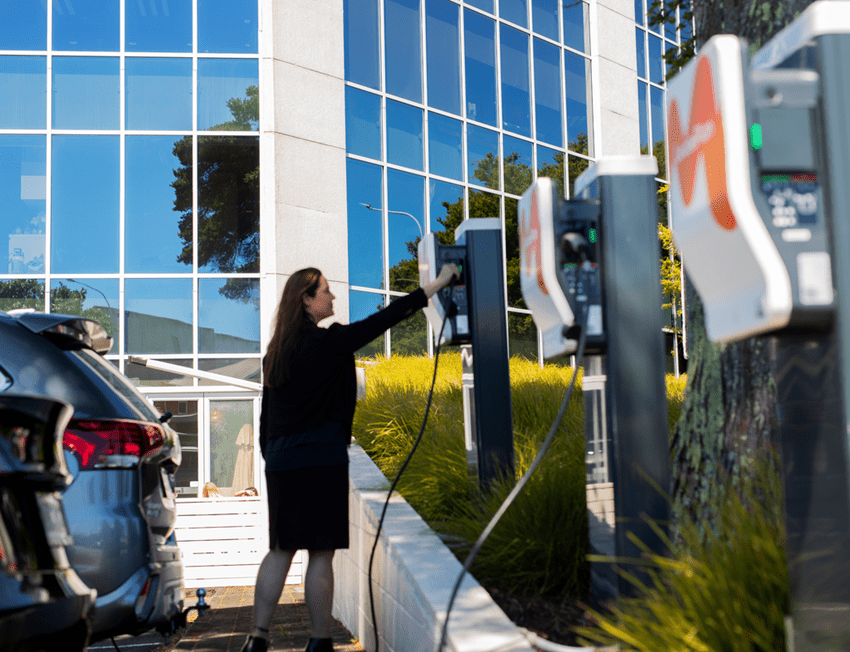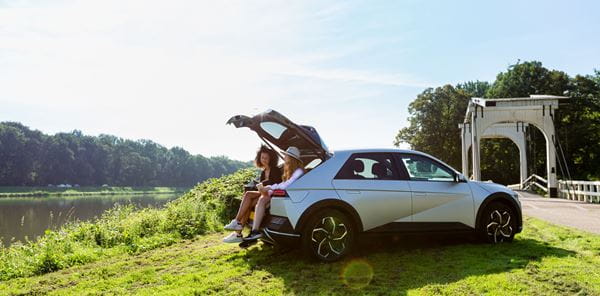
Taxation is the uncertain factor on the road to sustainable mobility, but it is also no more than a bump in the road
It may be that only emission-free company cars will be tax-deductible as of 2026; a different calculation for ‘false hybrids’; new reference values for CO2 emission every calendar year; will there be excise duties on electricity or taxes on charging stations, … For company cars, taxation is an uncertain factor today. Yet this should not be an obstacle for the transition to sustainable mobility.
As a fleet manager, this uncertain taxation may give you a headache. But in fact, taxation has always been volatile. For example, the maximum level of CO2 emissions that allows you to benefit from 100% tax deductibility has been decreasing steadily in recent years. So do not let this uncertainty slow down your intentions to choose for sustainable mobility. Here are three tips to prepare yourself as a company and fleet manager for this uncertainty and resistance.
1. Develop your own vision on mobility
Mobility cannot be an isolated question in a company. Before developing a vision on mobility, it is best to introspect. How are we going to work in the future now that working from home might be here to stay? What is our corporate vision on sustainability? How green do we want to be? How can we reduce our CO2 emissions? This is probably easier in an office environment than in a production environment.
Once you have an answer to these questions, you can start working on a mobility vision. Do you want to invest in sustainable mobility? If so, how fast and how far are you willing to go? To what extent can we contribute to reducing CO2 emissions? If you already pay attention to sustainability in your vision and mission, it is easier to translate that sustainable vision to mobility. Only then the second step can start.
2. Determine the internal impact
Change requires time and money. This is no different for sustainable mobility. The transition to electric driving is a real change process that needs to be managed well. Start that process with an internal impact study that takes the various aspects into account. Of course, this should include a cost price. There is a good chance that you still have lease contracts running and that you will have to implement the transition in phases. But you will also have to consider other matters, such as less expenditure on fuel and maintenance.
In addition, you need to assess the feasibility of the transition. This is not only about practical considerations – who needs which type of vehicle – but also about human aspects. How are we going to inform and guide the employees? How are the employees going to react? Because different generations in your staff may have other expectations about ‘mobility’. And a salesperson or technician might prefer a car with a longer driving range than an employee who uses the car mainly for commuting.
By determining the internal impact, you can examine the best options for each profile, division, or even on an individual level. And you may have removed part of the uncertainty.
3. Provide sufficient charging infrastructure
Of course, this transition will lead to many questions – and perhaps some resistance. This is perfectly normal because employees are also uncertain. They mainly have practical questions, most of which can be traced back to the charging of the car. From the charging process to working with a charging card and the charging infrastructure itself. To ensure that your employees can quickly get on board, sufficient charging infrastructure is needed. In the company’s car park and at the employee’s home. The Flemish government has recently decided that, as of 11 March 2021, the installation of a charging station is compulsory for every major new construction project and/or thorough renovation. This investment in a charging station at the employee’s home can be included in the lease contract.
Yes, but … electric cars are expensive
Finally, the price of the car is an ‘uncertain factor’. Electric cars are interesting from a fiscal point of view, but they also seem to be much more expensive. But actually, this is the case with any new technology in the beginning. On the one hand, because there are not a lot of customers yet and the high development costs can only be written off on a small basis. Governments therefore encourage purchase in the initial phase through subsidies or favorable tax rules. Once the market is mature, this is phased out. Without any impact on the transition.
Compare it with solar panels. Anyone who invested in solar panels before 2009 received 450 euros per 1,000 kWh of generated electricity for 20 years. Afterwards, the amount and duration of this government support measure decreased systematically. Nevertheless, it did not stop people from installing solar panels. Although the tax regulations had changed, the cost price of solar panels had also dropped sharply while the capacity per panel had risen (from 165 Wp per panel to even more than 380 Wp today). This is why it remained so interesting.
We now see that the same thing is happening with electric cars. Their driving range is increasing, the battery charges faster, more players are entering the market and prices are coming down. By 2022, almost every brand, every model, every segment will have an electric alternative that is as cheap or even cheaper than the classic model with a fuel engine.
Where there is change, there is always uncertainty and sometimes understandable resistance. By developing your own mobility vision and clearly communicating about the end goal, you can already remove most of that resistance. By determining the impact of the transition and developing the infrastructure, the fiscal – and financial – factor of uncertainty is also eliminated. And you can embark on the road to sustainable mobility without delay.







